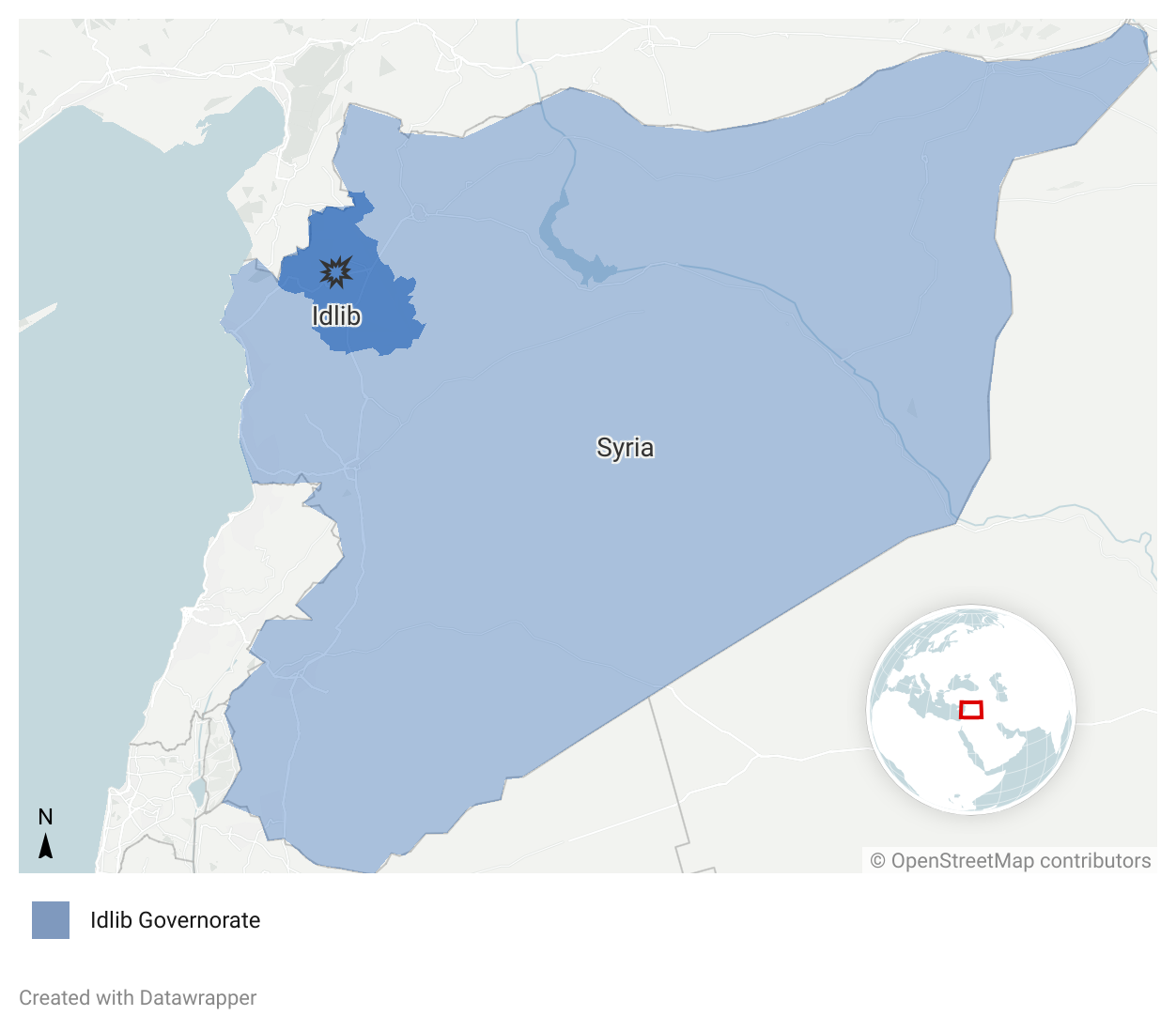Syrian Forces Besiege Jihadist Camp: Government Raid Signals Future Challenges
By Neil Robertson | 4 November 2025
Summary
Armed clashes between Syrian Government forces and a French-led jihadist group in Idlib province lasted for 2 days before a ceasefire ended the confrontation.
Uzbek foreign fighters arrived to reinforce fighters under Omsen, highlighting the new Syrian government’s challenges of managing thousands of foreign fighters remaining in Syria.
Renewed violence is likely, should al-Sharaa’s government attempt to cooperate with foreign governments in extraditing foreign fighters
Context
On 22 October 2025, Syrian government security forces carried out an operation targeting Omar Diaby, a.k.a. ‘Omar Omsen’, the leader of a faction of foreign fighters near Harem in Idlib, northern Syria. Omsen was accused of having kidnapped a French girl, prompting Syrian forces to carry out the operation, allegedly at the behest of French authorities. Security forces surrounded the al-Fardan camp, in which the Firqat al-Ghuraba faction was based, leading to heavy clashes.
On 23 October 2025, the clashes expanded with the arrival of Uzbek foreign fighters who joined forces with Omsen’s militants. With the expansion of the clashes, Syrian government forces allegedly abandoned plans to storm the al-Fardan camp, leading to an eventual ceasefire negotiated between government forces and the French-led militants. The dispute has reportedly been transferred to the Sharia court of the Ministry of Justice.
Implications
The recent confrontation raises several serious implications for Syrian security and stability. Firstly, the successful resolution of the operation signals an increasing strength of Syrian authorities to enforce law and order in the country. Targeting Omsen’s camp in response to local complaints enhances the government’s domestic credibility. Furthermore, cooperation with French authorities indicates an increased acceptance of the new Syrian government within the international system.
However, the operation raises serious questions about the ongoing role of foreign fighters in Syria’s post-conflict landscape. Foreign fighters, generally perceived as more radical than their Syrian counterparts, have been accused of carrying out many of the massacres against Syrian Alawites earlier this year. The existence of thousands of radical foreign fighters within Syria poses a major challenge to the al-Sharaa government as it attempts to moderate its image on the international stage. The fact that the Syrian government attempted to arrest Omsen, allegedly at the behest of French authorities, indicates that the new government may turn on foreign fighters who aided their rise to power. With years of combat experience and dedication to their cause, foreign fighters are likely to violently resist any moves made against them by the new Syrian government, as has been demonstrated at al-Fardan. Syria risks further violence should foreign powers choose to use foreign fighters as proxies in order to destabilise the nascent government.
Sergey Bobylev/Wikimedia Commons, CC BY 4.0
Forecast
Short-term (Now - 3 months)
Tensions are highly likely to rise between Syrian government forces and foreign fighters now that the former has signalled willingness to confront them militarily.
Divisions within al-Sharaa’s support base are likely to deepen, with emerging blocs coalescing around Syrian nationalist factions and transnational jihadist elements.
Medium-term (3-12 months)
Continued cooperation with Western states may enhance legitimacy for the al-Sharaa government and bring economic benefits.
Realistic possibility that al-Sharaa will continue to cooperate with Western states, risking alienation of foreign fighters and continued violence.
Long-term (>1 year)
Unlikely that the issue of dealing with foreign fighters will be resolved even within the coming years due to the instability this would cause for the new Syrian government.
It is highly likely that violence will break out again over the long-term, owing to the division within al-Sharaa’s support base between Syrian nationalist jihadists and transnational jihadist elements.



